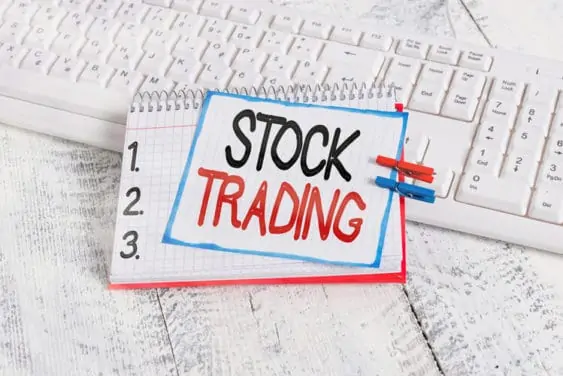Key Takeaways
- The TFSA annual contribution limit in 2024 is $7,000, increasing by $500 from the $6,500 limit in 2023.
- The lifetime TFSA contribution limit from 2009 to 2024 is now $95,000.
The New Year (2024) comes with a new annual limit for the Tax-Free Savings Account (TFSA) and an opportunity to save and invest for your short- and long-term goals.
Unlike the registered retirement savings plan (RRSP), which allows you to save for retirement in a “tax-deferred” account, the funds you put into your TFSA will remain tax-free for life.
That means the capital gains, interest income, and dividends* earned on your TFSA account are yours to keep. That being said, the TFSA does not grant you upfront tax deduction privileges like the RRSP.
When the TFSA was first introduced in 2009, the annual limit was pegged at $5,000. It has seen some growth over the years and will increase to $7,000 in 2024.
*Foreign dividends may be subject to a withholding tax.
TFSA Annual Limit Over The Years (2009-2023)
The annual TFSA limit is indexed to track inflation rates. Given that inflation dragged along the bottom for the past several years, increases in the yearly limit have been limited.
Starting at $5,000 in 2009, the annual limit has now grown to $7,000 in 2023.
This means there has been a total of four increases that can be attributed to the inflation index (in 2013, 2019, 2023, and 2024). A one-time increase by the Conservative government to $10,000 in 2015 lasted just one year.
The table below shows the annual TFSA contribution limit starting in 2009:
| Year | TFSA Contribution Limit | Cumulative Contribution Room |
| 2009 | $5,000 | $5,000 |
| 2010 | $5,000 | $10,000 |
| 2011 | $5,000 | $15,000 |
| 2012 | $5,000 | $20,000 |
| 2013 | $5,500 | $25,500 |
| 2014 | $5,500 | $31,000 |
| 2015 | $10,000 | $41,000 |
| 2016 | $5,500 | $46,500 |
| 2017 | $5,500 | $52,000 |
| 2018 | $5,500 | $57,500 |
| 2019 | $6,000 | $63,500 |
| 2020 | $6,000 | $69,500 |
| 2021 | $6,000 | $75,500 |
| 2022 | $6,000 | $81,500 |
| 2023 | $6,500 | $88,000 |
| 2024 | $7,000 | $95,000 |
If you were 18 years or older when the TFSA was launched in 2009, you now have a total contribution limit of $88,000 in 2023 and $95,000 in 2024.
How The TFSA Limit is Calculated
As mentioned earlier, the government adjusts the TFSA amount based on inflation numbers for the year (aka the indexation factor announced by the Canada Revenue Agency each fall). The resulting amount is then rounded to the nearest $500.
As shown below, indexing the $6,550 TFSA number we arrived at last year and using the updated 2024 indexation factor of 4.7% results in $6,857.85 (i.e. $6,550 x 1.047%). When you round up this figure to the nearest $500, it gives us $7,000 for 2024.
| Year | Indexation Factor | Indexed TFSA Limit |
| 2009 | 0.60% | $5,030 |
| 2010 | 1.40% | $5,100 |
| 2011 | 2.80% | $5,243 |
| 2012 | 2.00% | $5,348 |
| 2013 | 0.90% | $5,396 |
| 2014 | 1.70% | $5,488 |
| 2015* | 1.30% | $5,559 |
| 2016 | 1.40% | $5,637 |
| 2017 | 1.50% | $5,721 |
| 2018 | 2.20% | $5,847 |
| 2019 | 1.90% | $5,958 |
| 2020 | 1.00% | $6,017 |
| 2021 | 2.4% | $6,162 |
| 2022 | 6.3% | $6,550 |
| 2023 | 4.7% | $6,858 |
This is What Happens When You Over-Contribute
Contributing more than you are allowed to your TFSA will result in penalties. An over-contribution may occur because you forget your annual limit or make a withdrawal and then go ahead to re-contribute it in the same year.
The penalty for TFSA over-contribution is a 1% per month penalty tax on the excess amount.
For example, if your total contribution room is $8,000 in 2024 (i.e. the $7,000 limit for 2024 and $1,000 carried forward from previous years), and you decide to contribute $10,000 to your account in April 2024.
The excess $2,000 will generate a monthly penalty of $20 (calculated as $2,000 x 1%), or a total of $180 for the remaining 9 months of the year ($20 x 9 months) if you do not withdraw the excess contribution.
You may be eligible to request a waiver of your over-contribution penalty from the Canada Revenue Agency. Read more on the TFSA over-contribution penalty.
Some Options To Invest Your TFSA
There are many ways for you to save or invest in your TFSA account. Depending on what you plan to use the funds for (short- or long-term goals), your options include the following:
1. High-Interest Savings Account
If you are saving your TFSA to fund a short-term goal, e.g. vacation, wedding, car purchase, home down payment, etc., a savings account that pays you a reasonable interest may be the way to go.
With this option, you can have peace of mind by avoiding the volatility of the financial markets while expecting a “positive” return on your money.
High-interest savings accounts in Canada include:
EQ Bank Personal Account

Up to 4.00%* interest rate
Unlimited debits and bill payments
Unlimited Interac e-Transfers
No monthly account fees
Neo Savings Account

4.00% non-promo interest rate
No monthly fees
Unlimited free transactions
Access to a no-annual-fee credit card
2. Guaranteed Investment Certificates (GICs)
If you want safety for your funds because you need it for a short-term goal, another option is to buy a Guaranteed Investment Certificate (GIC). I have a list of the best GICs in Canada.
3. Exchange-Traded Funds (ETFs)
Exchange-Traded Funds (ETFs) are index funds that trade like stocks on an exchange. Compared to traditional mutual funds, ETFs charge much lower management fees and can help you build wealth faster.
If you are a do-it-yourself investor, you can create your own diversified ETF portfolio using a self-directed brokerage account. You can choose Questrade to receive $50 in free trades or go with Wealthsimple Trade ($25 bonus) and trade stocks and ETFs free of charge.
Alternatively, you can have a hands-off approach to investing by using a robo-advisor. They do all the work and charge you a management fee that’s much lower (average 0.50%) than what you pay to your mutual fund managers (average 1.98% for equity mutual funds).
I have reviewed the top robo-advisors in Canada, and my top pick is Wealthsimple Invest.
4. Stocks and Bonds
Your TFSA can hold various stocks and bonds depending on your risk tolerance and objectives. A self-directed brokerage account is useful for buying your stocks, bonds, and ETFs. Note that foreign dividends earned on your stocks may be subject to a withholding tax.
Wealthsimple Trade or Questrade are great platforms for trading stocks and ETFs.
5. Mutual/Index Funds
Mutual funds are generally very expensive in Canada – our mutual fund fees are one of the highest in the world! That being said, you can easily buy mutual funds at your bank or credit union for your TFSA account.
An index fund is a type of mutual fund that is passively managed and has lower fees. If you are interested in learning about index investing, check out this detailed guide.
Frequently Asked TFSA Questions
Yes, you can withdraw your TFSA funds at any time.
No. Any amount you withdraw can be re-contributed without penalty. However, you will need to wait until next year before you can re-contribute the money you took out this year. You can also carry your contribution room forward to future years indefinitely.
You can contribute to anyone’s TFSA account. Since you are using “after-tax” funds, the government doesn’t care, and you are not allowed to claim a tax deduction for any monies put in a TFSA.
You can contribute your annual TFSA limit plus contribution room carried forward from previous years. If you exceed your total limit, you will incur a 1% monthly penalty on the excess amount.
You can invest in almost any financial asset, including stocks, bonds, mutual funds, ETFs, GICs, etc. That being said, there are a few prohibited and non-qualified investments you should avoid.
No. TFSA means tax-free, that is, no taxes on withdrawals, dividend income, capital gains, and interest income. Note that foreign dividend-bearing stocks may result in some tax withholding (e.g. 15% for U.S. dividends). Also, you cannot claim a capital loss.
You can designate a beneficiary (anyone) or a “successor holder” (spouse or common-law partner) to receive your assets.
This is easy to do, and you should not incur any taxes or penalties. However, you usually have to pay your bank a transfer fee. Read more on how to transfer your registered accounts between banks.
You can open as many TFSA accounts as you wish. However, you need to ensure your contributions do not exceed your total contribution room.
Related Posts:








The total contributions is $63,500.00. Is that the total that TSFA can be? If over the years the TSFA has made investment gains(e.g. $10,000.00)is that amount added to the contribution limit, thereby making the total legal limit for this particular TSFA $73,500.00 or can the TSFA only go as high as the contribution limit? It seems like a nightmare trying to keep track.
Hi Ray,
The contribution limit of $63,500 is the total amount you have to contribute if you have been eligible to contribute to a TFSA account since 2009 and have not made any contributions so far. If you have contributed in previous years, your new total limit for the new year will be available on your prior year’s tax return or via CRA MyAccount. Mind you, contributions made in the first few months of the year may not be reflected in this balance.
It becomes a bit tricky when you have withdrawn funds from your TFSA and now want to re-contribute them. In this scenario, your contribution amount increases. For example, say you withdrew $20,000 from your TFSA in 2017 ($15,000 was direct contributions plus $5,000 in investment returns). You will be allowed to re-contribute the $20,000 in 2018 plus your regular $5,500 annual limit for 2018. Continuing with the example above, this means you are able to contribute a total of $25,500 in 2018.
There is no specific upper limit to how much your TFSA account can grow. However, you will need to be careful to follow the rules when re-contributing funds that you have previously withdrawn. I agree it can be a bit complicated. This post link below has an example that may help:
https://www.savvynewcanadians.com/tfsa-annual-limit-contribution-room-penalties-2018/
Great information Enoch! Yes, we advise clients that a TFSA should always be MAXED
first before considering any other investments. Why? Simple: Tax Free Money for Life!
Cheers – Chris from ProLaunch in Ontario.